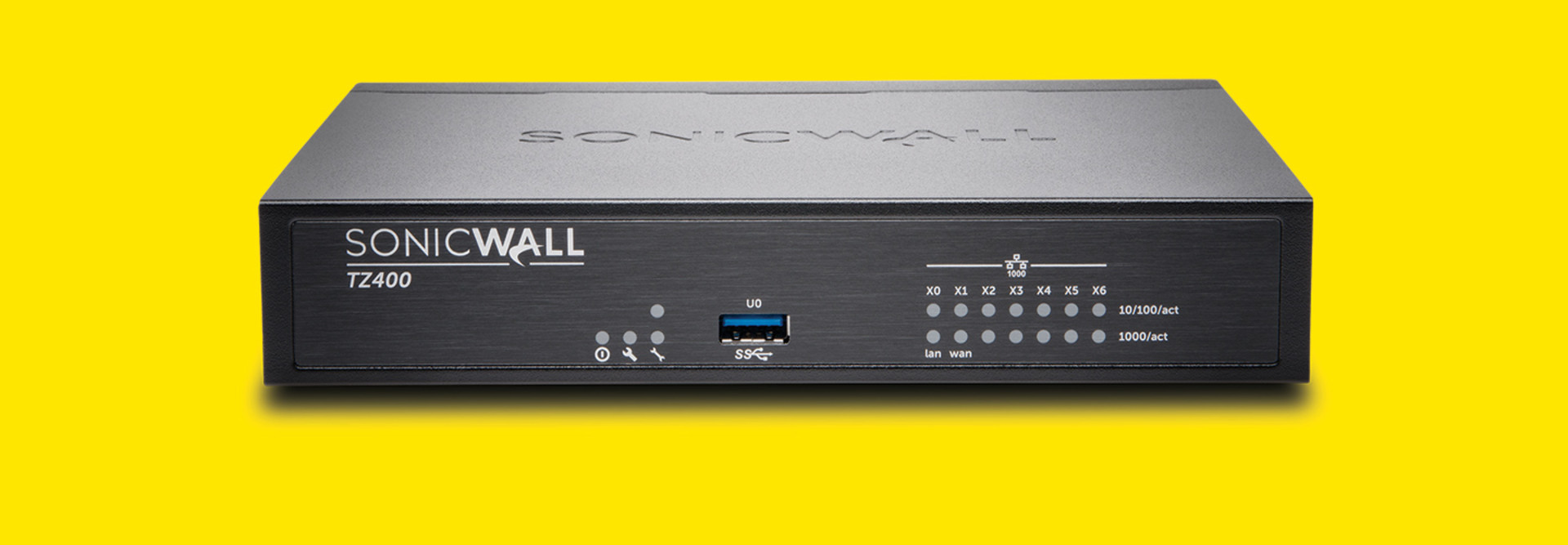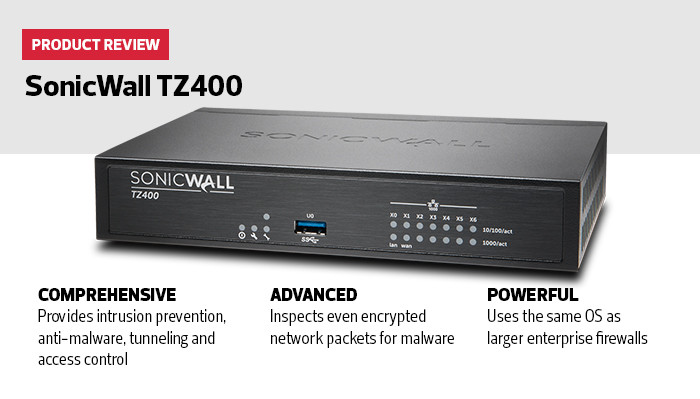Stop Zero-Day Attacks in Their Tracks
One of the strongest features of the SonicWall TZ400 is the ability to add modules as needed to protect smaller institutions and the branch campuses of large university systems. Such sites may not experience high traffic volumes but are nonetheless attractive targets for attackers.
The SonicWall Capture Advanced Threat Protection service is an optional module that one would probably not expect to find on an entry-level security appliance. It was easily added to my evaluation unit, as with other modules.
While most threats are detected and stopped by the appliance itself, the ATP service is a cloud component that consists of multiple sandboxing engines that probably could not run locally. Once enabled, whenever the TZ400 runs across a file or process that it’s unsure about, that file is halted in place and transferred to a secure gateway. It is held there until cleared by the sandboxing processes. Files revealed to be malicious are destroyed and never make it to network clients.
MORE FROM EDTECH: Get insights into the pandemic's effect on higher education security.
SonicWall Captures the Power of the Cloud
Thousands of SonicWall appliances around the world are linked through the cloud. As soon as any of them use the cloud-based sandboxes to reveal the presence of unknown malware, a signature is created and shared with all the others. Suddenly, those extremely malicious zero-day attacks become known quantities to anyone with a SonicWall security appliance running the ATP service.
The other benefit to using cloud-based sandboxing is that it’s not restricted to just one engine. There are several sandboxes that SonicWall uses, making it nearly impossible for a hacker to create malware that could trick all of them.
You don’t often find this level of cybersecurity protection in an entry-level appliance. Yet the TZ400 supports it, as does the even-smaller TZ300. Adding the ATP service was just as easy as activating internal modules. Other than a very slight delay while files are being analyzed in the cloud, there are no disadvantages to enabling smaller colleges and campuses to enjoy the kind of cybersecurity protection normally found only in large enterprise deployments.
The TZ400 offers the same hardware-based cybersecurity protection found in large enterprise appliances without requiring an IT staff for setup or maintenance. No small campus or institution should be without this kind of protection.
SonicWall TZ400
Total Firewall Throughput: 1.3Gbps
Anti-malware Throughput: 300Mbps
Maximum DPI Connections: 90,000
Optional Wireless AP: 802.11ac dual-band wireless
Dimensions: 5.3 x 7.5 x 1.4 inches
Weight: 1.6 pounds










